Testing and using a battery for the 1800 mAh HTC Desire S smartphone
Introduction
After reading the post of HeavyRazzer (Experience of using a 3600 mAh battery for the HTC Sensation smartphone), it was decided to test the battery for my HTC Desire S.
Having visited the website of the company Mugen Power, I saw that due to the peculiarity of the body of my smartphone (namely, the body is made using unibody technology), the company only produces batteries according to the form factor that matches the original one. In other matters, it is even better for me, since there was no desire to thicken the smartphone. The maximum battery capacity for the Desire S was 1800 mAh, which is 24% more than the capacity of the original battery (1450 mAh).
When I learned about the company's generosity, I wrote through the feedback form on the site, about my desire to write a battery test review (I wrote in English). Less than a day later, a Russian-speaking representative of the company contacted me to agree on details, after which the company gave the nod to send me the battery. After 2 weeks the postman brought me a package.
Packaging

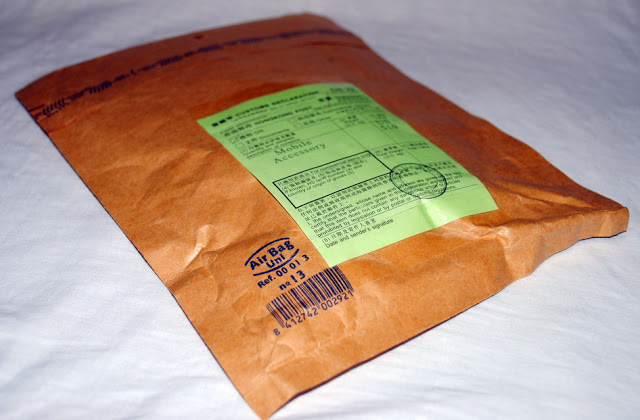
The package that the postman brought
In the package (inside the pimply polyethylene) there was, in fact, the battery itself and a short instruction insert.
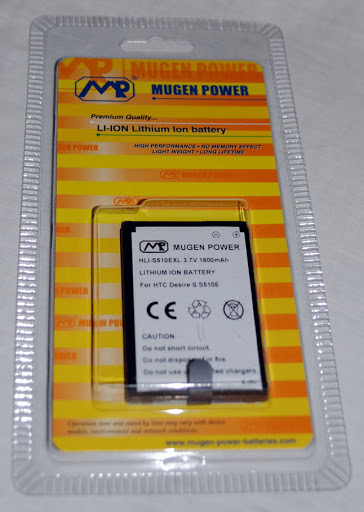
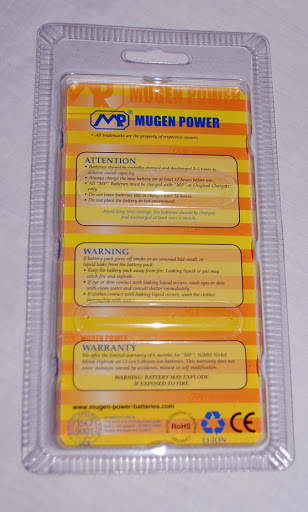
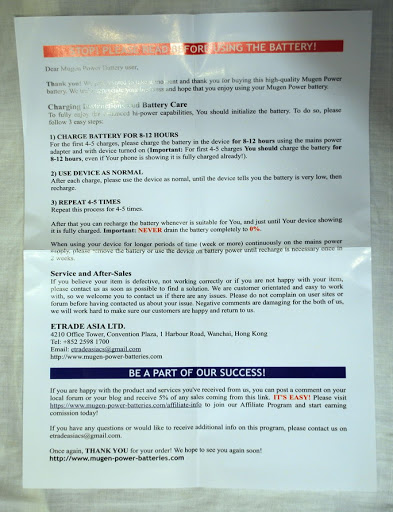
Leaf liner and battery itself
In general, the package was well packed and did not cause any complaints.
The plastic packaging of the battery itself is not sealed and opens freely, which does not guarantee that you are the first owner of this battery, but relying on the company's reputation, I think this should not happen.
The battery size is exactly the same as the original from HTC. I was pleasantly surprised by the tongue to remove the battery from the phone. Since the battery is inserted into the phone at 70 percent, the extraction with such a tongue is much more convenient.
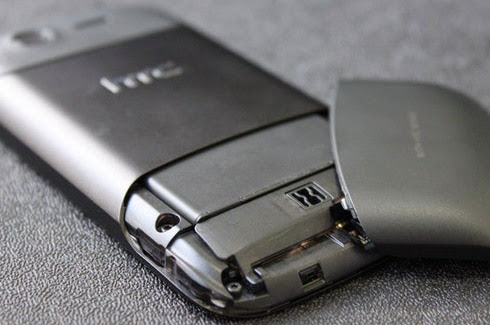
Inserted battery in the smartphone
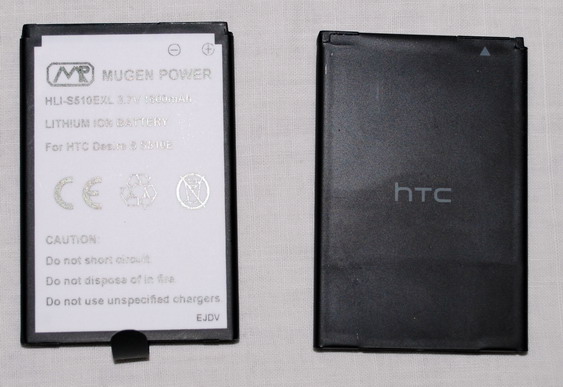
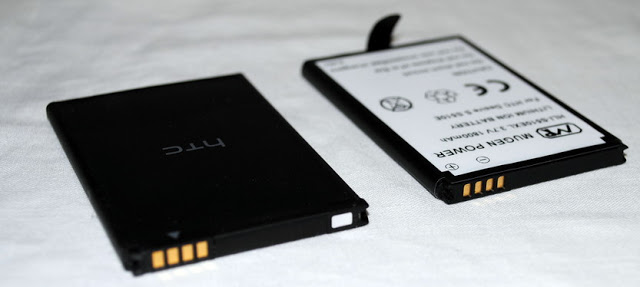
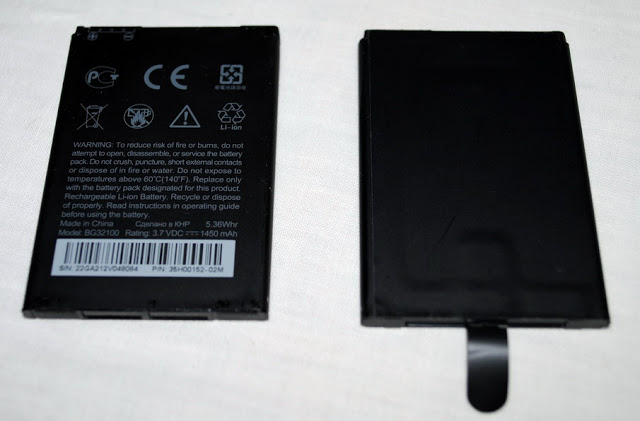
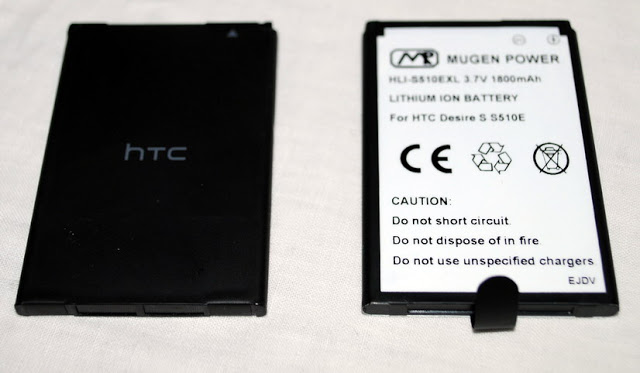
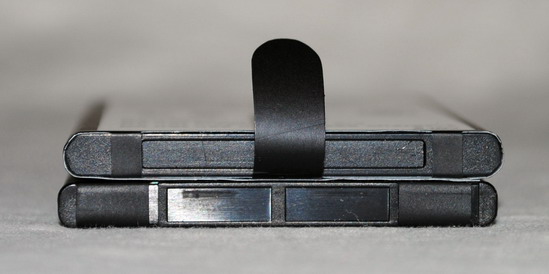

Comparison of the original battery with the battery from Mugen Power.
Exploitation
Following the complete brief instructions, the first five charge-discharge cycles, I discharged the battery to a minimum (up to 1%), after which I put the phone on charge from the original charging of the phone for 8-10 hours.
After the first cycle, the Battery Monitor Widget program showed a capacity of 1400mA / hour, which alarmed me. But after five cycles, the battery fully reached the working capacity and the Battery Monitor Widget already showed a capacity of 1911 mA / hour ± 9% .
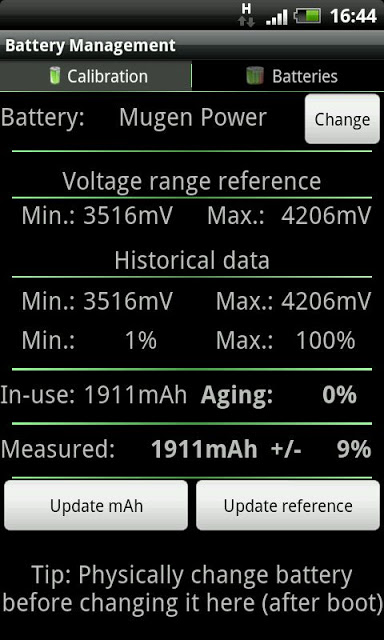
')
What is surprising, if I had enough of an old battery for a day and a half (about 30-35 hours of battery life), then with the new battery I forgot about charging for two, and sometimes for three days (about 50-60 hours of battery life).
Given that the backpack always has a spare original battery, the autonomy of the smartphone reaches a high level.
Here it is necessary to tell about the mode of use of the smartphone.
On the day, it’s about 40 minutes of navigation using Yandex maps, about 1 hour of conversation, a total of 20-30 minutes of reading mail, another 20 minutes of surfing the Internet. To all this, the Wi-Fi module and mobile Internet are always included. At the same time, Wi-Fi and mobile Internet consumed 20% and 10% of the battery, respectively. Therefore, if you include these modules only as needed, autonomy can be increased by another 20% -25%.
The battery is already in use for a month and did not cause any complaints. I do not know what dictates the short battery life with the old (original) battery, but with the new autonomy, on average, 35% -40% higher (with an increased capacity of only 24%) was pleasantly surprised. And all this without increasing the physical size.
Total
As a result, the actual battery capacity was higher than stated at about 6% (100 mA / h optional). I do not know if I was lucky specifically with this battery or it should have been, but this is undoubtedly a plus. Also, the autonomy of the smartphone from the new battery increased by 35% -40%.
Conclusion
Extended battery, with increased use of the smartphone, stably enough for 2 days. With energy-saving use - for 3-4 days.
In urban conditions, with a new battery, there is no need for a spare one at all. When leaving for nature, a spare battery takes up very little space and adds another day of autonomy.
Moreover, for the convenience of charging a spare battery, the company has a cradle available for my smartphone, in which, a slot is provided for recharging a spare battery.
I hope this review will be useful and interesting, especially since Mugen Power keeps up with the times and there are already batteries for new smartphones, such as Samsung Galaxy Note, Samsung Galaxy Nexus, HTC Sensation, HTC Titan, etc.
PS
Upon request, I give a link to the battery in the review.
Source: https://habr.com/ru/post/143803/
All Articles